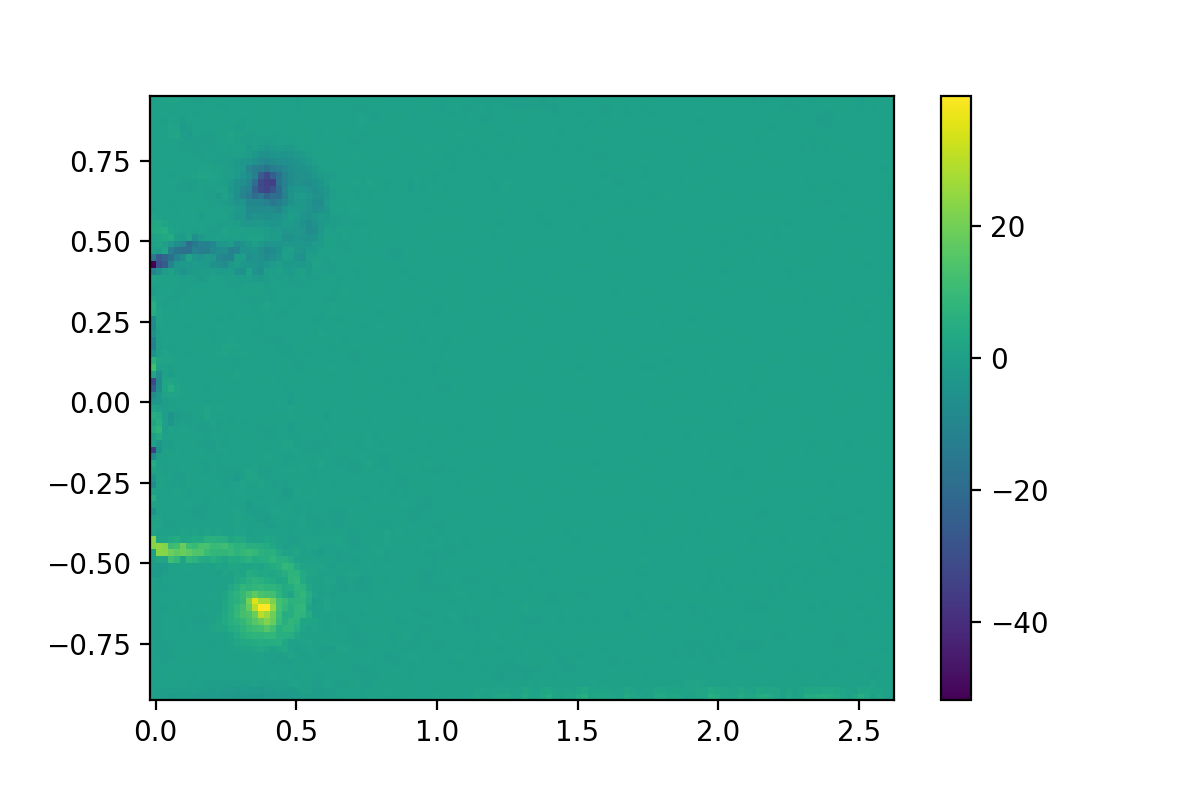Using Python to realize difference method. Here the data is from expermient. Use Central Difference method to solve the inner points, while forward difference for left and bottom boundary, backward difference for right and top boundary.
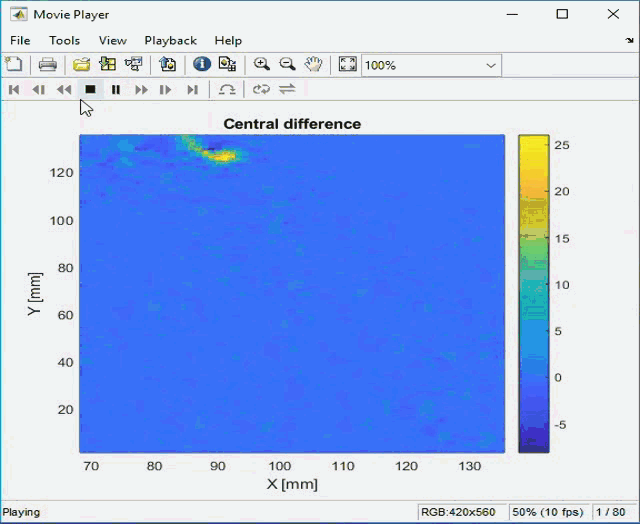
1 import the numpy, pyplot and mlab
1 import numpy as np 2 import matplotlib.pyplot as plt 3 import matplotlib.mlab as mlab
2 load the X/C, Y/C, U, and V data from “Velocity.dat” into a numpy arrays.
1 data_vertex = np.loadtxt('Velocity0241.dat', dtype=float, delimiter=',', skiprows=1) 2 #data_vertex = np.genfromtxt('Velocity0241.dat', dtype=float, delimiter=',',skip_header=1) 3 4 print(len(data_vertex)) 5 6 X = data_vertex[:,0] 7 Y = data_vertex[:,1] 8 U = data_vertex[:,2] 9 V = data_vertex[:,3]
3 reshape each data array into an 89x125 rectangle (the reshape function should work).
1 ''' 2 x = X.reshape(89,125) 3 y = Y.reshape(89,125) 4 u = U.reshape(89,125) 5 v = V.reshape(89,125) 6 ''' 7 8 x = np.reshape(X,(89,125)) 9 y = np.reshape(Y,(89,125)) 10 u = np.reshape(U,(89,125)) 11 v = np.reshape(V,(89,125)) 12 13 num_row = x.shape[0] # get number of rows of Mc 14 num_colume =y.shape[1] # get number of columes of Mc 15 16 print(num_row) 17 print(num_colume) 18 19 print(np.shape(x)) 20 print(y[0,:]) 21 22 23 24 plt.plot(x[:,0]) 25 plt.plot(y[0,:]) 26 27 plt.savefig('space_linear.png', dpi=500)
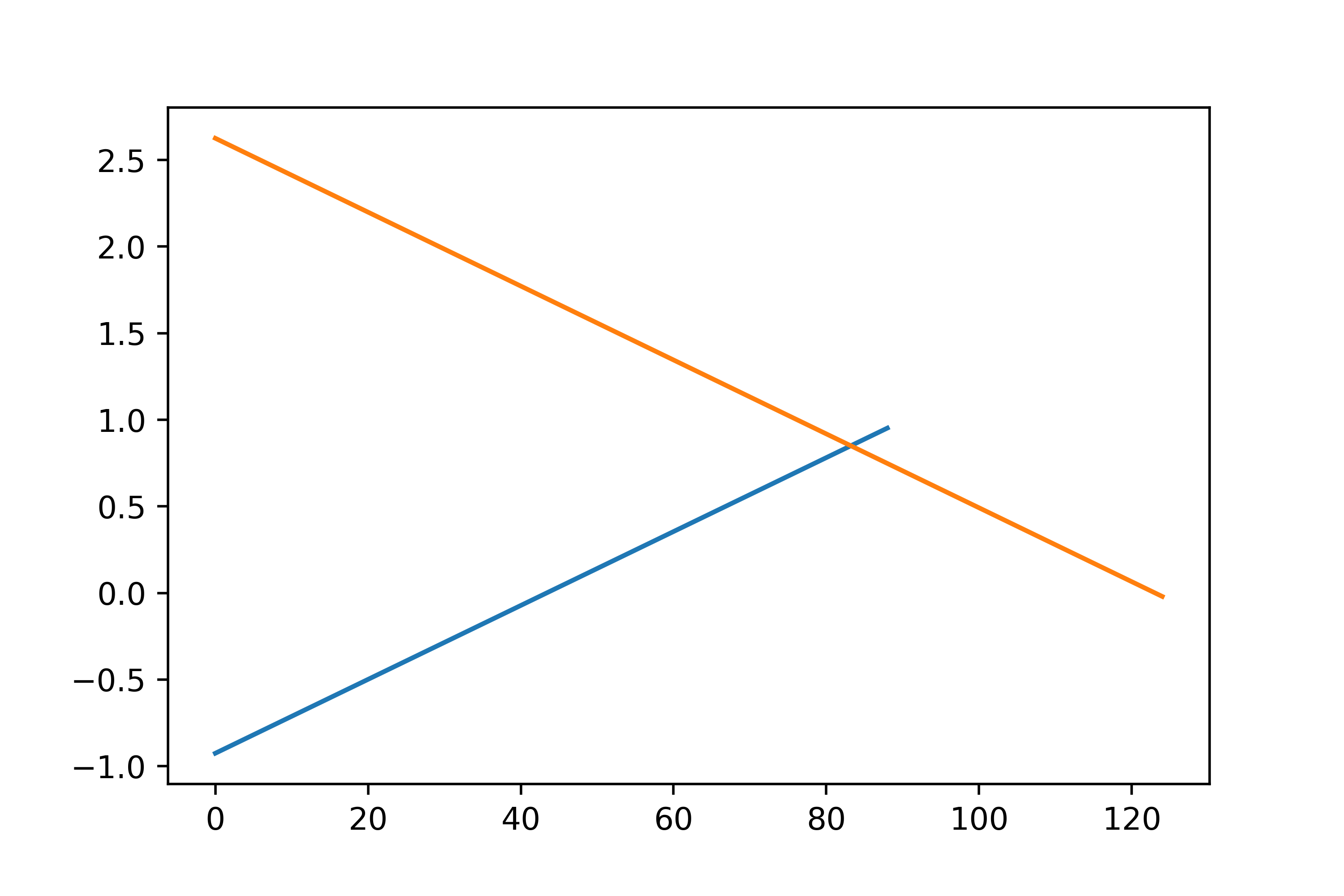
4 plot the flow field using the streamplot or quiver method from pyplot.
1 # streamplot 2 3 import numpy as np 4 import matplotlib.pyplot as plt 5 import matplotlib.mlab as mlab 6 7 8 fig, ax = plt.subplots(figsize=(10,10)) 9 ax.quiver(y,x,v,u) 10 #ax.quiver(y,x,v,u,color='red', width=0.005, scale=50) 11 12 ax.set_title('Vortex') 13 ax.set_xlabel('y',size=20) 14 plt.ylabel('x',size=20) 15 16 plt.savefig('vector_field_of_velocity.png',dpi=200,format='png') 17 18 plt.show()
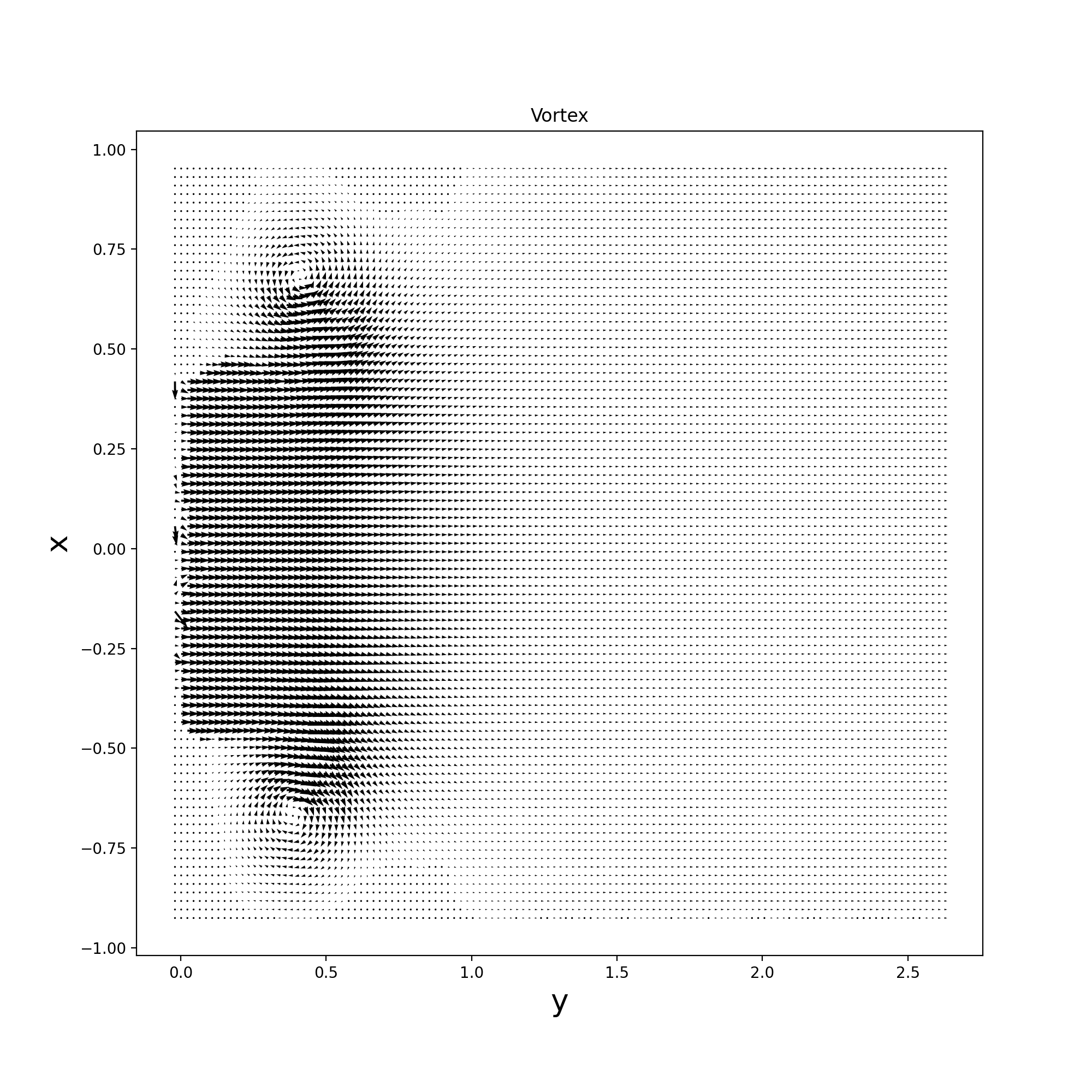
1 # streamplot 2 3 import numpy as np 4 import matplotlib.pyplot as plt 5 import matplotlib.mlab as mlab 6 7 fig, ax = plt.subplots(figsize=(6,6)) 8 9 x1 = np.linspace(x[0][0],x[88][0],89) 10 y1 = np.linspace(y[0][0],y[0][124],125) 11 12 ax.streamplot(y1,x1,v,u,\ 13 density=1, linewidth=1, color='r', arrowsize=2) 14 15 ax.yaxis.set_ticks([-1.0,-0.75,-0.5,-0.25,0.0,0.25,0.5,0.75,1.0]) 16 17 plt.savefig('vortics.png',dpi=200,format='png') 18 19 plt.show() 20 21 22 ''' 23 fig = plt.figure() 24 ax = fig.gca() # gca get current axis 25 ax.streamplot(y,x,v,u) 26 '''
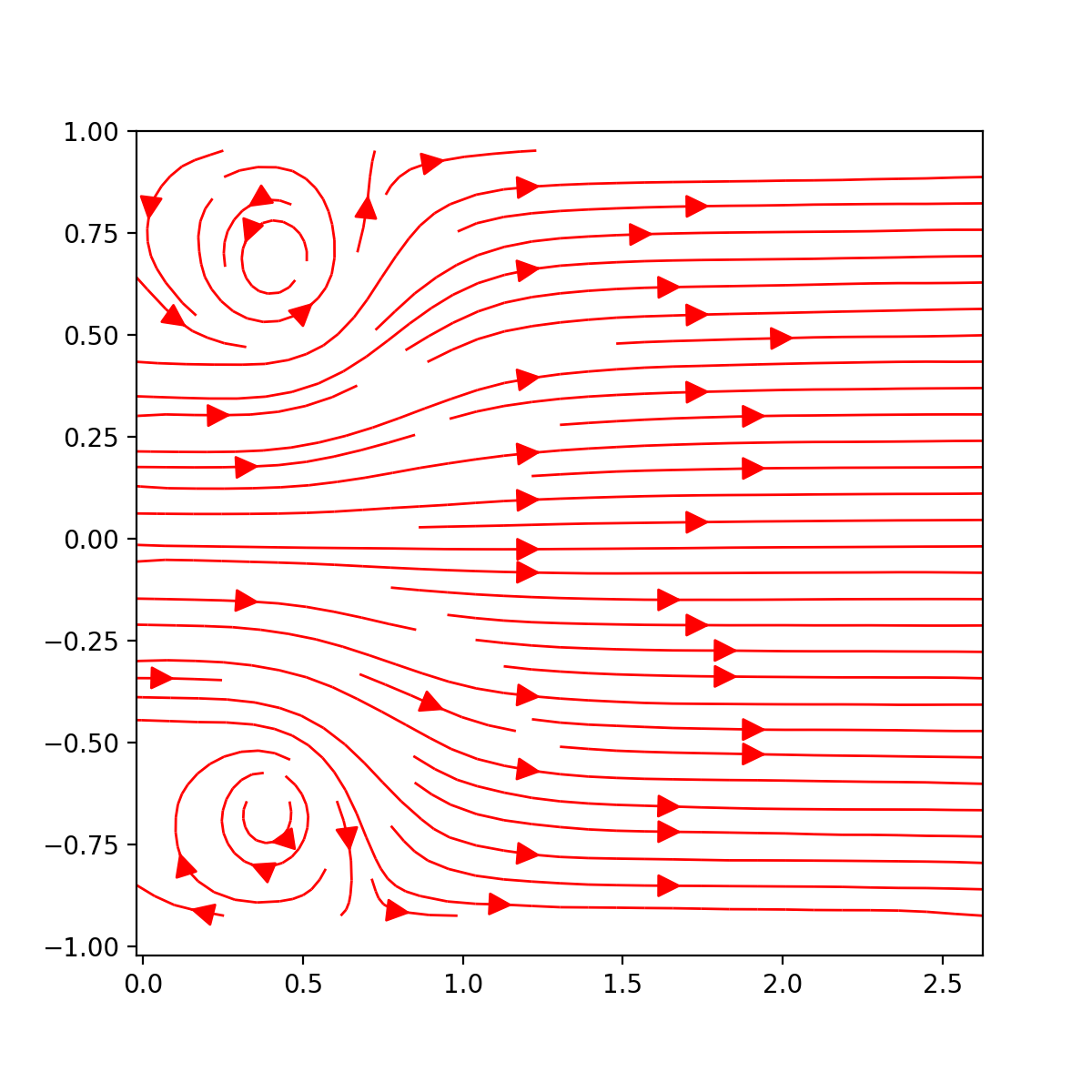
5 calculate the gradient of U & V
1 # gradient function in x direction 2 def dx(M, space): # dx:derivative x 3 Mc = M.copy() 4 num_row = Mc.shape[0] # get number of rows of Mc 5 num_colume = Mc.shape[1] # get number of columes of Mc 6 for i in range(num_row): 7 for j in range(num_colume): 8 if i == 0: # left boundary, we use forward difference method 9 Mc[i][j] = (M[i+1][j] - M[i][j]) / (space) 10 elif i == (num_row - 1): # right boundary, we use backward difference method 11 Mc[i][j] = (M[i][j] - M[i-1][j]) / (space) 12 13 else: # inner points, we use central difference method 14 Mc[i][j] = (M[i+1][j] - M[i-1][j]) / (2*space) 15 return Mc 16 17 # gradient function in y direction 18 def dy(M,space): 19 Mc = M.copy() 20 for i in range(num_row): 21 for j in range(num_colume): 22 if j == 0: # lower boundary, use forward difference 23 Mc[i][j] = (M[i][j+1] - M[i][j]) / (space) 24 elif j == (num_colume - 1): #upper boundary, use backward fifference 25 Mc[i][j] = (M[i][j] - M[i][j-1]) / (space) 26 else: # inner points, use central difference 27 Mc[i][j] = (M[i][j+1] - M[i][j-1]) / (2*space) 28 return Mc 29 30 delta_x = x[1][0] - x[0][0] 31 delta_y = y[0][1] - y[0][0] 32 33 dudx = dx(u, delta_x) 34 dudy = dy(u, delta_y) 35 dvdx = dx(v, delta_x) 36 dvdy = dy(v, delta_y) 37 38 print(delta_x) 39 print(delta_y)
6 divergence
1 Div = np.array(dudx) + np.array(dvdy) 2 3 Curl = np.array(dvdx) - np.array(dudy)
1 import numpy as np 2 import matplotlib.pyplot as plt 3 4 print(np.shape(Div)) 5 6 p = plt.pcolormesh(y,x,Div,vmin=-10, vmax=30) 7 8 cb = plt.colorbar(p) 9 cb.ax.tick_params(labelsize=10) 10 11 font = {'family' : 'serif', 12 'color' : 'darkred', 13 'weight' : 'normal', 14 'size' : 16, 15 } 16 cb.set_label('colorbar',fontdict=font) 17 18 #cb.ax.tick_params(labelsize=32) 19 20 plt.savefig('divergence.png',dpi=200) 21 22 plt.xticks(fontsize=16) 23 plt.yticks(fontsize=8) 24 plt.show() 25 26 ''' 27 divergence should be 0 for incompressible flow according to fluid mechanics, but here 28 it is not 0, that might because the real flow is 3D, but here we just calculate 2d, 29 in xy plane, and ignore the contribution of the third dimension to divergence 30 '''
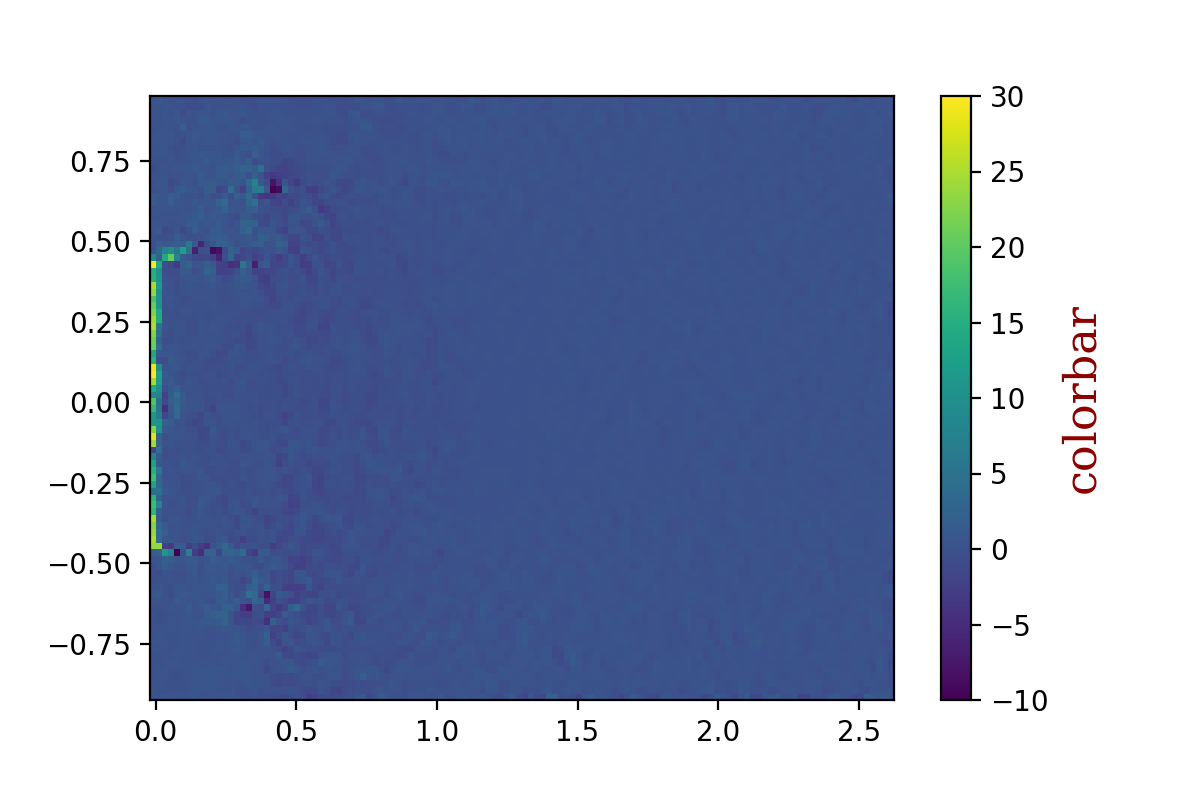
7 Curl (vortex in z direction for xy 2D flow)
1 import numpy as np 2 import matplotlib.pyplot as plt 3 4 print(np.shape(Curl)) 5 6 p = plt.pcolormesh(y,x,Curl) # The rotation is in the opposite direction 7 8 plt.colorbar(p) 9 10 plt.savefig('curl.png',dpi=200) 11 12 plt.show()
